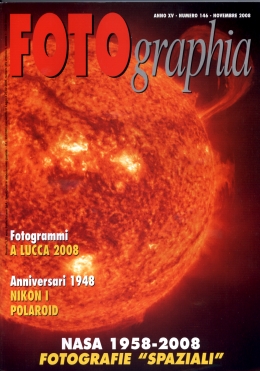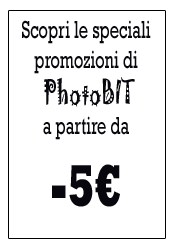| Body material |
Magnesium alloy |
| Sensor |
• 23.7 x 15.7 mm CMOS sensor
• DX format
• RGB Color Filter Array
• Built-in fixed low-pass filter
• 12.84 million total pixels
• 12.4 million effective pixels
• 5.49 x 5.49 µm
• 3:2 aspect ratio |
Image sizes
(Full image) |
• 4288 x 2848 [L]
• 3216 x 2136 [M]
• 2144 x 1424 [S] |
Image sizes
(High speed
cropped) |
• 3216 x 2136 [L]
• 2400 x 1600 [M]
• 1600 x 1064 [S] |
| File formats |
• NEF (12-bit RAW)
• NEF + JPEG
• JPEG (EXIF 2.2)
• TIFF (RGB) |
| Lens mount |
• Nikon F mount
• Full size image: 1.5x field of view crop
• High speed cropped: 2.0x field of view crop |
| Usable lenses |
• AF Nikkor (including AF-S, DX, VR and D-/G-type) : All functions possible
• D-type Manual-Focus Nikkor: All functions except autofocus and some
exposure modes available
• AF Nikkor other than D-/G-type: All functions except 3D Color Matrix
Metering and 3D Multi-Sensor Balanced Fill-Flash possible
• AI-P Nikkor: All functions except 3D Color Matrix Metering,
3D Multi-Sensor Balanced Fill-Flash and AF possible
• Non-CPU AI Nikkor : Usable in [A] or [M] mode with Matrix-Metering,
Center-Weighted and Spot metering available. Indication of aperture No.,
after user inputs the aperture f/No. and focal length f=mm by multi-selector
operation. |
| Auto Focus |
• 11 area TTL (9 area when in High speed cropped mode)
• Multi-CAM2000
• AF working range: -1 to 19 EV (ISO 100, normal temperature) |
| Lens Servo |
• Single Servo AF [S]
• Continuous Servo AF [C] (with Lock-On *)
• Manual focus [M] |
| AF Area Mode |
• Single Area AF
• Dynamic AF with Focus Tracking and Lock-on
• Closest Subject Priority Dynamic AF
• Group Dynamic AF |
| AF assist |
None built-in (via. external flash) |
| AF Lock |
• Locked using the AE-L/AF-L button
• Half-press shutter release button in AF mode [S] |
| Exposure modes |
• Program Auto [P] - flexible program possible
• Shutter-Priority Auto [S]
• Aperture-Priority Auto [A]
• Manual [M] |
| Metering |
TTL full-aperture exposure metering system;
• D-/G-type Nikkor lenses support 3D Color Matrix Metering II using the 1,005-pixel CCD while other AF Nikkor lenses with built-in CPUs support Matrix Metering (Non-CPU lenses require manual input of lens data)
• Center-Weighted Metering (75% of the meter's sensitivity concentrated on the 8mm dia. circle)
• Spot Metering (3mm dia. circle, approx. 2% of entire frame); metering position can be linked to the focus area when using Nikkor lenses with built-in CPU |
| Metering modes |
• 3D Color Matrix II *
• Center-Weighted
• Spot |
| Metering range |
• 3D Color Matrix Metering: EV 0 to 20
• Center-Weighted Metering: EV 0 to 20
• Spot Metering: EV 2 to 20
[at normal temperature (20°C/68°F), ISO 100 equivalent, f/1.4 lens] |
| Meter Coupling |
CPU and AI (Automatic maximum aperture indexing) |
| AE Lock |
Locked using AE-L/AF-L button |
| AE Bracketing |
• 2 to 9 frames
• 1/3, 2/3 or 1 EV steps
|
| Exposure compen. |
• +/-5.0 EV
• 1/3, 1/2 or 1.0 EV steps |
| Sensitivity |
• Auto ISO (Up to ISO 800, custom max ISO and min shutter speed *)
• ISO 100 - 800
• 1/3, 1/2 or 1.0 EV steps
• HI-0.3 (ISO 1000) *
• HI-0.5 (ISO 1100) *
• HI-0.7 (ISO 1250) *
• HI-1 (ISO 1600)
• HI-2 (ISO 3200)
|
| Shutter |
• Electromagnetically controlled vertical-travel Focal-plane shutter
• 30 to 1/8000 sec
• Flash X-Sync: 1/250 sec
• Bulb |
| White balance |
• Auto (hybrid: ambient sensor, 1005-pixel CCD, image sensor)
• Presets (five)
• Manual (six steps with fine tuning)
• Color temperature in Kelvin (31 steps)
• White balance bracketing (2 to 9 frames, 10,20,30 MIRED steps) |
| Color space |
• sRGB (3 modes)
• Adobe RGB (3 modes *)
• sYCC |
| Image parameters |
• Sharpening: Auto, Normal, Low, Medium Low, Medium High, High, None
• Tone: Auto, Normal, Less Contrast, More Contrast, Custom 1,2 & 3 *
• Color: -3,-2,-1,0,+1,+2,+3
• Hue: +/-3, +/-6, +/-9 degrees
• Black & White mode |
| Viewfinder |
• Optical-type fixed eye-level pentaprism
• Built-in diopter adjustment (-3 to +1m-1)
• Eyepiece shutter provided
• Eyepoint: 19.9 mm (at -1.0m-1)
• Frame coverage 100%
• Viewfinder magnification approx 0.86x with 50 mm f/1.4 lens |
| Focusing screen |
• B-type BrightView Clear Matte Screen III and V-Type Screen for High speed cropped
• Interchangeable with optional E-type finder screen with grid |
| Viewfinder info |
• Focus indications
• Shutter speed
• Aperture
• Exposure mode
• Metering system
• Shutter speed lock
• Aperture lock
• AE lock
• Bracketing indicator
• Electronic analogue display
• Frame counter
• Ready-light
• ISO sensitivity
• White balance
• Image size / quality
• Eleven sets of focus brackets (area)
• High speed cropped area (electronically dimmed *) |
| LCD monitor * |
• 2.5 " TFT LCD
• Tempered glass coating
• 230,000 pixels
• Backlight / brightness adjustment
• Wide angle view (170°) |
| Flash control |
• New Creative Lighting System: i-TTL Balanced Fill-Flash controlled by five-segment TTL Multi Sensor with Nikon Speedlight SB-800/600: Advanced Wireless Lighting, FV (Flash Value) -lock, Flash Color Information Communication for Auto White Balance, Auto FP High-Speed Flash Sync, Modeling Flash
• D-TTL Balanced Fill-Flash: When used with the Speedlight SB-80DX/50DX and in accordance with the mounted lens, five-segment TTL Multi Sensor control makes available 3D Multi-Sensor Balanced Fill-Flash, Multi-Sensor Balanced Fill-Flash, and Standard D-TTL Balanced Fill-Flash
• AA (Auto Aperture)-type Flash available when used with SB-800/80DX and lens with built-in CPU
• Non-TTL Auto Flash (A-type Flash) with a Speedlight such as SB-30/27/22s etc.
• Range-priority manual available with SB-800 |
| Flash Sync Mode |
• Front-Curtain Sync (normal sync)
• Red-Eye Reduction
• Red-Eye Reduction with Slow Sync
• Slow Sync
• Rear-Curtain Sync |
| Flash Ready-Light |
Lights up when flash fully charged with Speedlight SB-800/80DX/50DX/30/28/
27/22s; blinks for full output warning |
| Flash Accessory Shoe |
ISO 518 standard-type hot shoe contact; Safety lock mechanism provided
|
| Flash Sync Terminal |
ISO 519 standard terminal, lock screw provided |
| DOF Preview |
• Stop-down lens aperture by pressing button
• Activates modelling flash |
| Shooting modes |
• Single
• Continuous High [CH] Full image - 5 fps
• Continuous High [CH] High speed cropped image - 8 fps
• Continuous Low [CL] Full image - 1 to 4 fps (custom)
• Continuous Low [CL] High speed cropped image - 1 to 7 fps (custom)
• Self-Timer (programmable)
• Interval timer (Timelapse) |
| Continuous shooting buffer size |
• RAW files: Full size 17 images, High speed cropped 29 images
• JPEG files: Full size 22 images, High speed cropped 35 images |
| Self-timer |
• 2, 5, 10 or 20 sec programmable |
| Voice recording |
• Voice memo (up to 60 sec)
• Optional auto record |
| Orientation sensor |
Tags images with camera orientation |
| Playback mode |
• Full frame
• Thumbnail (4 or 9 images)
• One-touch zoom
• Slideshow
• Histogram
• Highlight point |
| Image trimming * |
Available for all original images except S size |
| Connectivity |
• USB 2.0 (Hi-Speed) Mini-B connector (with cable clip *)
• Video out
• Remote control 10-pin
• PC Sync flash terminal |
| GPS |
NMEA 0183 Interface standard supported with GPS Cable MC-35 (optional)
Also with compass (heading) data * |
| Communications |
FTP file transfer with optional Wireless Transmitter WT-1 (IEEE 802.11b) or WT-2 (IEEE 802.11b/g) |
| Video out |
• NTSC
• PAL |
| Storage |
• Compact Flash Type I or II
• Microdrive supported
• FAT 12/16 and FAT 32 support
• 30 characters of text can be input and stored in EXIF header
• No CF card supplied
• Image Authentication System support * |
| Power |
• Lithium-Ion EN-EL4a 2500 mAh, 11.1 V DC *
• Included battery charger MH-21 (145 min full charge *)
• Optional AC adapter EH-6 |
| Battery monitoring |
The LCD monitor on the camera back displays the following information
about the EN-EL4a battery:
• Remaining charge (%)
• No. of shots taken since last charge
• Calibration status (Recommended/Not required)
• Battery life (5 stages) |
| Dimensions |
158 x 150 x 86 mm (6.2 x 5.9 x 3.4 in) |
| Weight (no batt) |
1070 g (2.4 lb) |
| Weight (inc. batt) |
1252 g (2.8 lb) |
| Box contents |
Rechargeable Li-ion Battery EN-EL4a, Quick Charger MH-21, Body Cap, Camera Strap AN-D2Xs, Audio Video Cable EG-D2, USB Cable UC-E4, LCD Monitor Cover BM-3, Battery Chamber Cover BL-1, Type-B Focusing Screen, PictureProject software CD-ROM
|
| Optional accessories |
Wireless Transmitter WT-2/2A, Extended Range Antenna WA-E1, AC Adapter EH-6, Type-E Focusing Screen, Magnifier DG-2, Antifog Finder Eyepiece DK-17A, Rubber Eyepiece Cup DK-19, Eyepiece Correction Lens DK-17C series, Magnifying Eyepiece DK-17M, Right-Angle Magnifying Viewing Attachment DR-5, Speedlight SB-800/SB-600/R1C1, Capture NX software, Camera Control Pro Software, Image Authentication Software
|

 Feed RSS 0.91
Feed RSS 0.91 Feed Atom 0.3
Feed Atom 0.3


















 Articolo
Articolo  Storico
Storico Stampa
Stampa